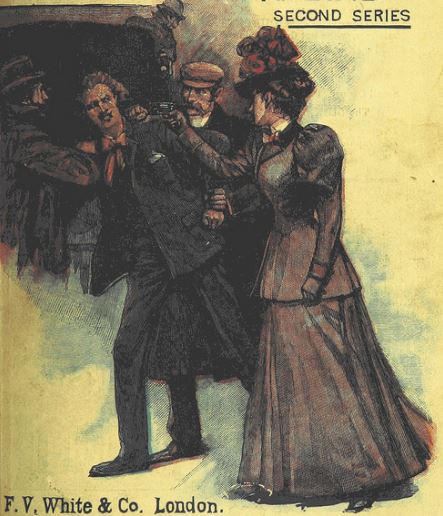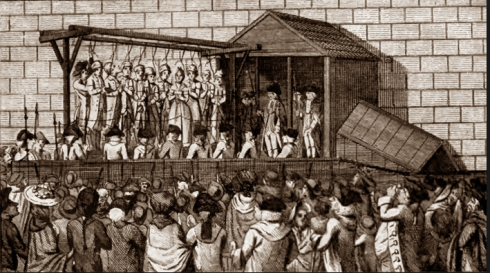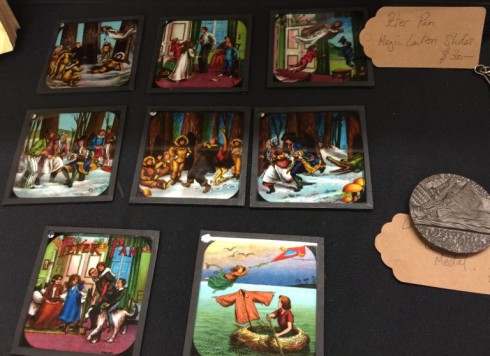“We’re all stories, in the end. Just make it a good one, eh?”

Martin Stone; patron saint of lost books and booksellers. (photographer unknown, but it’s a great jacket)
Martin Stone has moved on. The tip-tapping man of many pockets, drainpipe legs and dangling Gauloises has succumbed to a grim and irresistible disease. The flea markets of Paris and the stalls of Portobello should, by rights, be islands of silence.
Not for too long though, Martin wouldn’t like that, just a minute or two of quiet, slightly damp, reflection followed by a shrug and a return to bustling commerce.
His kind of memorial would involve a knowing nod and the production of some specially secreted oddity from under a stall; a sly grin and a “I thought you might come by. Take a look at this.”
Stop all the clocks, shut the bloody dog up, all that stuff. He dealt enough poets to know that understanding words and understanding books are very different things.

Portrait of The Artist as a Young Rockstar
Everything about Martin was a good story.
I was in one of those Parisian flea markets with him quite recently, the bugger made me get up really early and meet him in a cafe somewhere in the dimmer aura of Paris, full of sullen, smoking men in wet woollen coats drinking coffee strong enough to take the silver off a mirror.
“This place is great!” He enthused, giving a credible impression of a mer cat in a tight Paul Smith suit. “Stick close though, some of these bastards can be a bit touchy.”
I wasn’t sure whether he meant the occupants of the cafe or the promised flea market nestled nearby beneath an underpass, he probably meant both.
I walked around with him, or in fact trailed after him, for an hour or two, trying to keep up with the rapid French, the knowing laughter, people shouting his name across makeshift aisles and endless boxes of dodgy Gallimards that he would sift through in the time it took me to figure out there were actually books on a stall that looked at first glance like someone had upended a skip full of 19th century brothel furniture onto a table.
He’d have moved on before I could get five books in. You knew incontrovertibly that once Martin Stone had moved on, there was nothing good left. He smiled at everybody, carried away very little.
On one stand near the roadside he shook hands with a lanky bloke who looked like he should be in a documentary about the Resistance. I bought a piece of schoolboy smut written by George Sands’ nephew, while Martin solemnly unwrapped something wrapped in layered plastic bags produced from an ancient suitcase. It was one of those typically French artist’s books, all pochoir and glassine, and the two of them leaned over it to protect it from the drizzle while Martin leafed delicately through it.
“Give me a minute.” He said to me and hurried off with his phone pressed to his ear.
The hero of the resistance looked me up and down and gestured after Martin.
“Is he well?” He asked.
“No.” I shrugged. He shook his head mournfully, and stamped his feet.
Less than five minutes later Martin returned, they nodded at each other, Martin took possession of the book in its wrappings and we headed off.
“Anything good?” The book had disappeared into yet another bag.
“Oh yes! Lovely thing, really scarce, only ever seen one before.”
“Shouldn’t be hard to shift then.”
“Oh, already sold it. Four and a half.”
That’s pretty much how it went on. Later in his flat in Versailles we ate cake and talked about Michael Moorcock. In retrospect every minute I was lucky enough to spend with Martin over the last 20 years was an education in knowledge, charm and enthusiasm, and there weren’t anywhere near enough of them.
When I was in my 20’s he gave me the keys for his then apartment in the Rue Cels in Montparnasse and said I could flat-sit while he was in the US. I spent a week drinking wine and eating cheese, reading Sebald and wandering through the Jardin de Luxembourg. Bill Wyman phoned his answering machine. I listened to zydeco. He could tell I needed a break, he knew the signs, and he generously provided it.
In return, when stuck on one of his overburdened forays to London, he’d occasionally come and sleep on my couch in Waterloo. We’d smoke too much and drink too much, before he climbed the huge, terrifying mountain of learning not to, and I would wake up the next morning feeling simultaneously close to death, and privileged.
We talked about books. He knew more, stored and treasured and preserved and embodied more about books than anyone I have ever met or heard of. Despite his vast knowledge, amazing memory, and almost magical ability to track and locate gems of bibliophilic rarity, he was always quietly offhand about it.
He taught me the priceless lesson that just because something isn’t worth much, that doesn’t mean it isn’t valuable. I always felt that his mere existence gave me a kind of permission to write four hundred word descriptions of books worth fifty quid; this was not a qualification that necessarily appealed to any of my subsequent employers. There are books in my office right now that bear his small, neat pencil annotations, there are probably similar books in the offices of every major book-dealer in the world.
He got around.
I was supposed to go and see him this week, he died the day before I was going to catch my train. I won’t regret the books I never bought, or the ones I really shouldn’t have; but I will regret that. Without him I might have been a bookseller, but I wouldn’t have been brave enough to try and be a good one. That’s still a work in progress, but if I ever make it, it’ll be down to him.
We weren’t close, but I loved him. I didn’t know him well enough, but I am very grateful to him. The world, such as it is, has lost something important, and is a lesser place because of it.
Special Collections Cataloging at Penn
 not-very-exciting-looking red two-volume set appeared at the top of my stack of books to catalog in the French Culture Class Collection. From a cursory look at the volumes, I could see it was a collection of items in various formats–published pamphlets, newspaper clippings, and manuscript letters–bound together and all on one topic. Both volumes had a manuscript table of contents at the front. At the start, we didn’t know what the subject of the collection was, who compiled it, or where and when the library acquired the collection. In rare book cataloging at Penn, we’ve begun to create finding aids to describe some of the more unusual items in our collections that warrant further description than we can fit into a traditional catalog record. This set seemed like a perfect candidate to be described in a finding…
not-very-exciting-looking red two-volume set appeared at the top of my stack of books to catalog in the French Culture Class Collection. From a cursory look at the volumes, I could see it was a collection of items in various formats–published pamphlets, newspaper clippings, and manuscript letters–bound together and all on one topic. Both volumes had a manuscript table of contents at the front. At the start, we didn’t know what the subject of the collection was, who compiled it, or where and when the library acquired the collection. In rare book cataloging at Penn, we’ve begun to create finding aids to describe some of the more unusual items in our collections that warrant further description than we can fit into a traditional catalog record. This set seemed like a perfect candidate to be described in a finding…

























